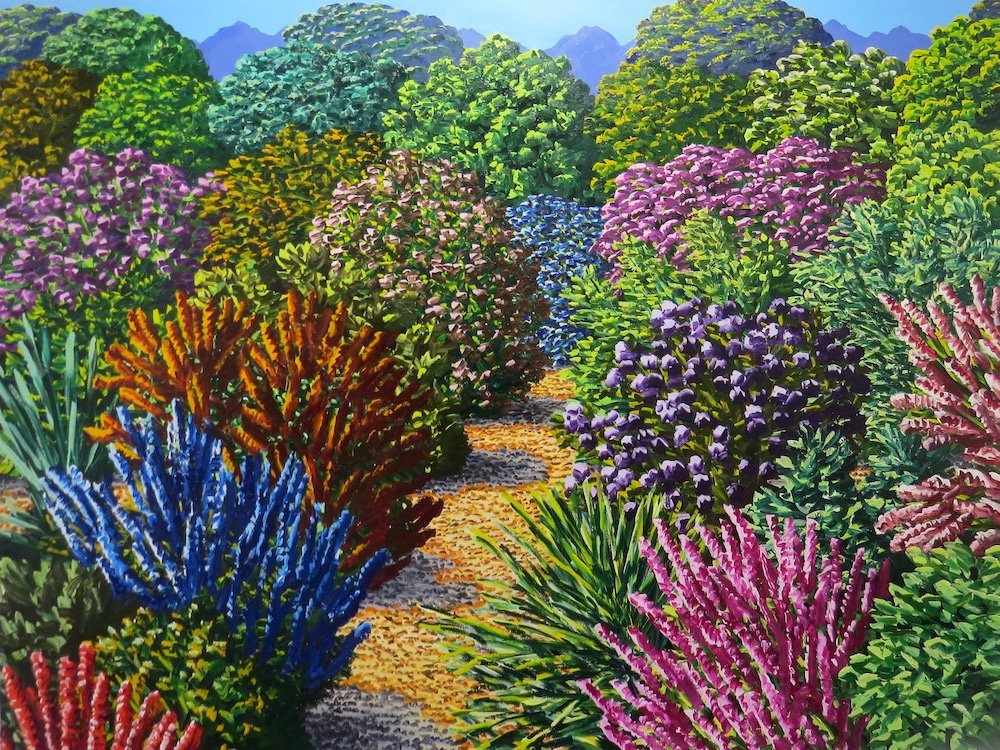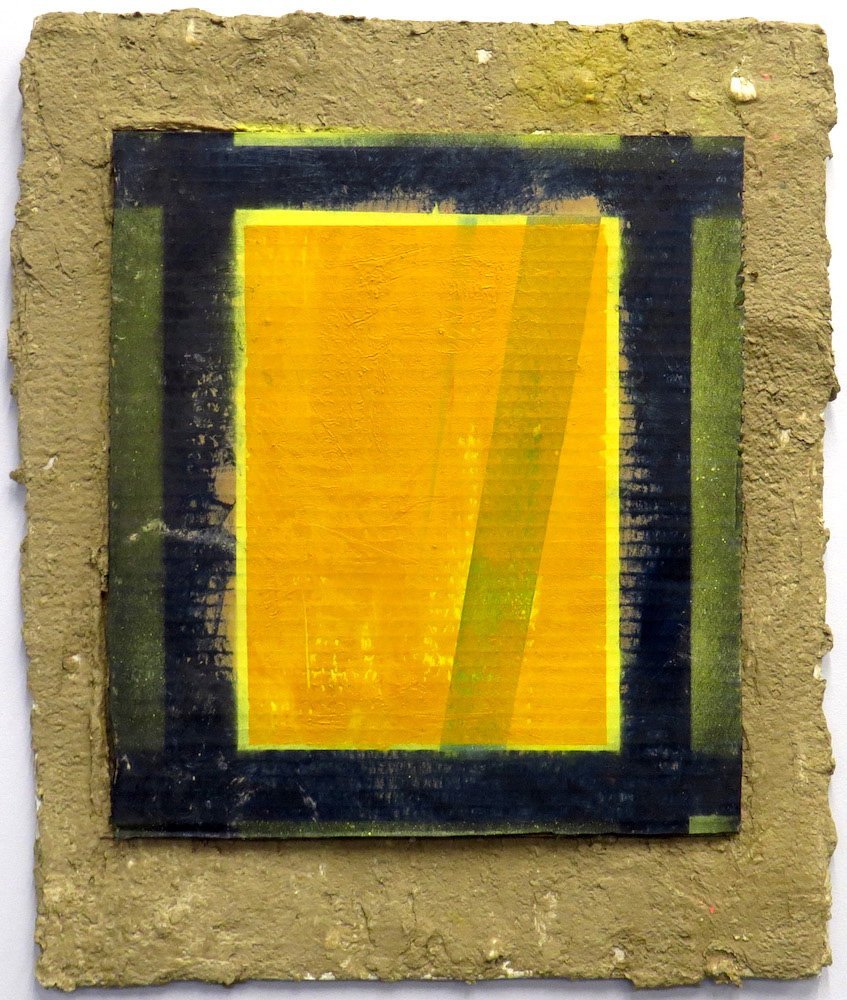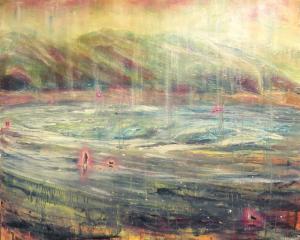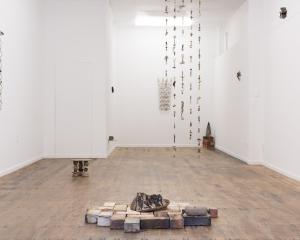
(The Artist’s Room)
The Artist’s Room’s current joint exhibition provides two differing but complementary images of the New Zealand countryside.
Catherine Garrett’s paintings, landscapes formed from shaded areas of colour separated by thick black delineations, have the feel of stained glass designs. In the current exhibition, we see a series of impressive vistas of the artist’s "happy place", Central and West Otago. While Garrett’s style has not changed appreciably from previous exhibitions, her colours have darkened, with sombre skies hanging above the rivers and hills. More buildings are also present here, a change to the largely deserted landscapes of her earlier work, with impressive results in pieces such as Old Cromwell and Bannockburn Autumn.
Around and among these works are large-scale ceramics by Katie Gold. Taking New Zealand flora as her starting point, she has created a series of impressive "Leaf Pillars", moulded from fired clay sheets, many of them decorated with transfer images of native birds and plants. These ceramic punga and ti kouka bear a resemblance to paintings by New Zealand artist Stanley Palmer, and readily capture our native trees. In other works, Gold has created sumptuous bowl forms, including a large "standing bowl". The artist’s bright palette of autumnal reds and strong greens and blues makes an excellent counterpoint to Garrett’s paintings.

(Milford Gallery)
Karl Maughan’s "Colyton" extends the artist’s lengthy exploration of imagined formal gardens.
Ostensibly set around the artist’s memories of the Manawatu, these gardens exist only within the artist’s mind, yet are readily believable. Maughan’s works take an instantly recognisable form, with shrubs redolent with blossom spilling out across the margins of shingle paths which lead into a hidden middle distance. Beyond, on the skyline, the blue peaks of distant mountains pierce a clear sky.
Maughan’s works picture an Arcadian realm, but it is not an untroubled place. The plants, for all their beauty, become overpowering and claustrophobic, encroaching upon the pathways and no longer the tamed vegetation of a landscaped garden. The winding paths become ambiguous. Are they pleasant walks, or is there a sinister side to the way they disappear around bends?
Maughan’s works are frequently presented paired, loose diptychs with shared paths along their border, and work better in this form. As separate images, the paths are literally sidelined, the already overflowing blooms becoming worryingly dominant.
While Maughan’s subject matter may not change much between exhibitions, the presence of an older painting by the artist in the gallery allows the opportunity to compare and contrast. The newer pieces — brighter and more painterly — show that Maughan’s work has acquired greater panache and confidence over the years.

(University of Otago Faculty of Law, Richardson Building)
For the past several years, the University of Otago’s law faculty has annually hosted an exhibition by a master of fine arts student from Otago Polytechnic. This year’s exhibition, by Linda Cook, is a "Body of Evidence".
The exhibition is composed of around a dozen painterly abstractions, each created in thick, "ugly" impasto on found objects, predominantly in the form of layers of cardboard. The artist has stated that she intends the works to "visually challenge, seeking out un-pretty relationships ..."
The attempt to find appealing visual presence through this deliberate awkwardness can, by its very nature, only have mixed results, but by and large it works. The location of the exhibition, within the corridors and rooms of the brutalist architecture of the Richardson Building, adds an element of appropriateness to the pieces, for in their own way they are also brutalist works. The pieces bear repeated viewing, with the seemingly haphazard placing of the layered bases creating a jarring edge to works which might otherwise be too formal and plain.
If there is one concern about the exhibition, it is that individual works and titles are separated, making it impossible to discover which piece goes with which title. As such, any significance to the names — and any clues as to potential meaning — is lost to the viewer.
By James Dignan


![... we all become all of these things [installation view] (2025), by Megan Brady.](https://www.odt.co.nz/sites/default/files/styles/odt_landscape_small_related_stories/public/story/2025/03/1_we_all_become_all_of_thes.jpg?itok=nicA_yAm)


![Poipoia te Kākano [installation view]. Allison Beck, Megan Brady, Kate Stevens West, Jess...](https://www.odt.co.nz/sites/default/files/styles/odt_landscape_small_related_stories/public/story/2025/02/1_poipoia_te_k_kano.jpg?itok=ssJ8nxyx)






